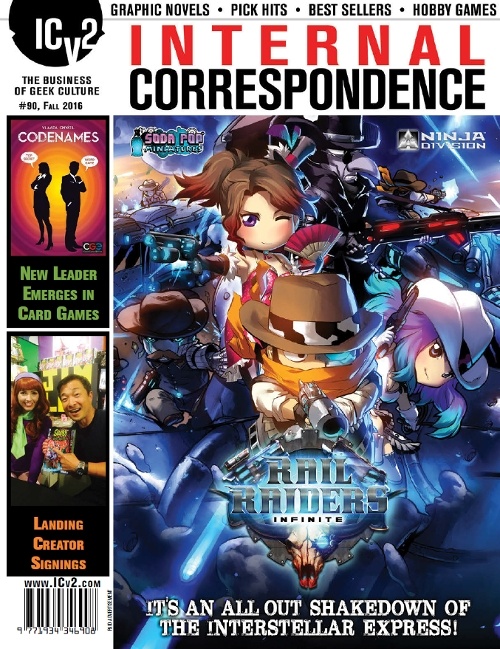The biggest change in our methodology this year was to add Kickstarter sales (adjusted to eliminate sales outside the U.S. and Canada) to our estimates of total market size, and as the numbers were significant for 2014 as well, we revised our 2014 estimates in two categories: we now estimate that hobby board games in 2014 were around $160 million (adding $35 million for Kickstarter sales), and that card and dice games were around $60 million (adding $5 million for Kickstarter sales). Our total market size estimate for 2014 is now $920 million, $40 million higher than the $880 million estimate without Kickstarter (see "Hobby Games Market Climbs to $880 Million"). Making the change for 2014 allows us to provide a better year-over-year comparison by category and for the total.
Even with the higher estimates for 2014, the growth rate in 2015 was a remarkable 29%, with growth in every one of our five product categories. The largest category, collectible games, grew 14% from $550 million to $625 million, the lowest percentage growth of any category, but the second largest dollar growth.
Hobby board games, now firmly established as the second largest hobby game category, grew 56%, from $160 million in 2014 to $250 million in 2015.
Non-collectible miniature games grew 40%, from $125 million in 2014 to $175 million in 2015.
The fastest growth rate was for hobby card and dice games, which added a digit and grew 75% to $105 million in 2015, up from $60 million in 2014.
And the smallest category, roleplaying games, grew 40%, from $25 million in 2014 to $35 million in 2015.
|
U.S. / Canada Games Sales -- 2015 |
|
|
Category |
Retail Sales (in millions) |
|
Collectible Games |
$625 |
|
Non-Collectible Miniature Games |
$175 |
|
Hobby Board Games |
$250 |
|
Hobby Card and Dice Games |
$105 |
|
Roleplaying Games |
$35 |
|
Total Hobby Games |
$1,190 |
We define "hobby games" as those games produced for a "gamer" market, generally (although not always) sold primarily in the hobby channel of game and card specialty stores. We define the “hobby games market” as the market for those games regardless of whether they’re sold in the hobby channel or other channels.
The total hobby games market estimate is derived from estimates for five individual categories: collectible games (which include Collectible Card Games, Collectible Miniatures Games, and Collectible Dice Games), miniatures (non-collectible), board games, card and dice games, and roleplaying games.
We want to thank the many industry insiders that were willing to contribute their expertise and unique viewpoints to our efforts; without their help and willingness to speak frankly about their own estimates of market size and the reasoning behind them, it would have been impossible to complete this project.
We also report on the Spring season in the hobby game market in the new issue of Internal Correspondence, and found that sales increases continued, albeit at a more modest pace, as tectonic shifts in the distribution of hobby games presaged major impacts on the business for years to comic. The early net effects of those changes were to anoint the Big Five hobby game distributors as the key paths to the channel, with major exclusive distribution relationships ending.
ICv2 also published its hobby game bestseller charts for the Spring season in the new issue, covering all five categories.
For the lists of the bestselling Collectible Games in the hobby channel, mass channel, and overall, click here.
For the bestselling Board Games in the hobby channel, click here.
For the bestselling Card/Dice Games in the hobby channel, click here.
For the bestselling hobby channel Non-Collectible Miniature lines, click here.
For the bestselling hobby channel RPGs, click here.
The reports referred to in this article originally appeared in ICv2’s Internal Correspondence #90 (for more information on that issue, see "ICv2 Releases ‘Internal Correspondence’ #90").




